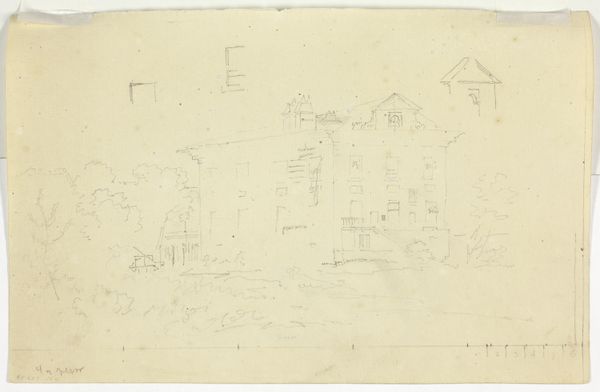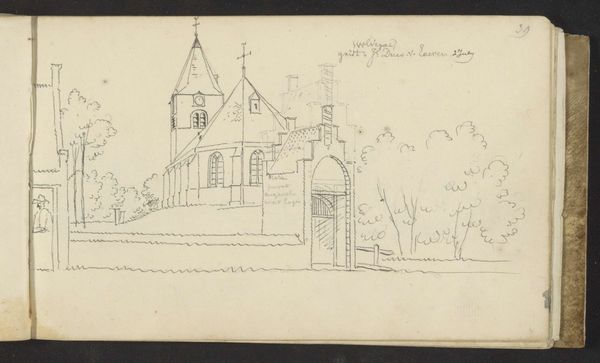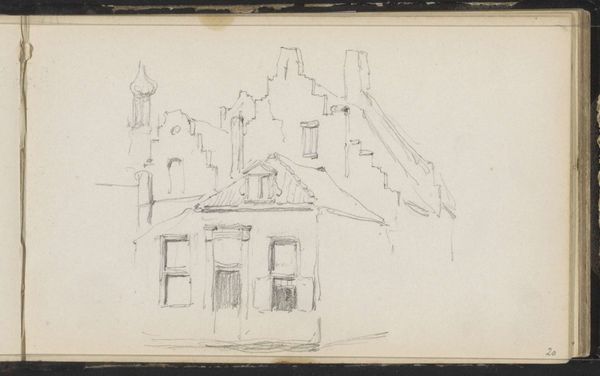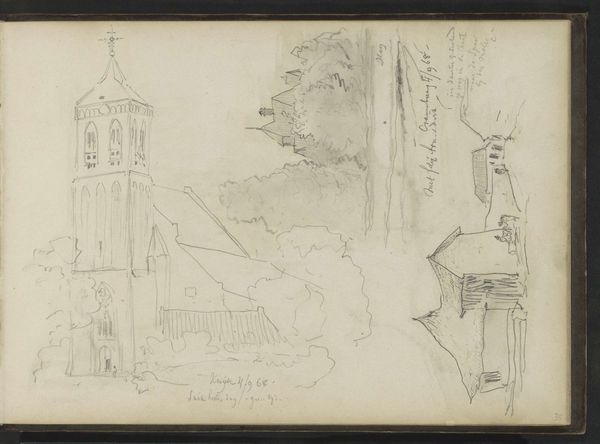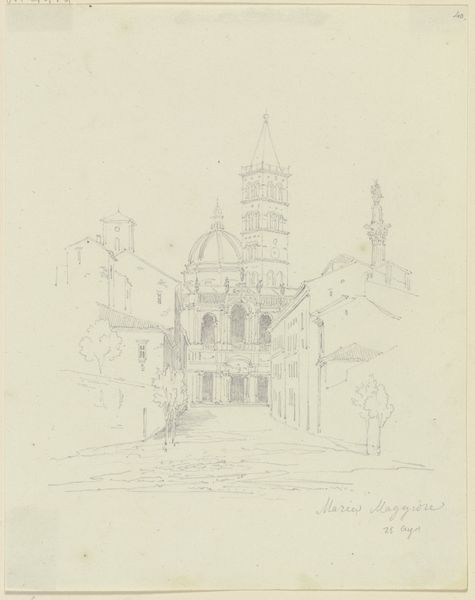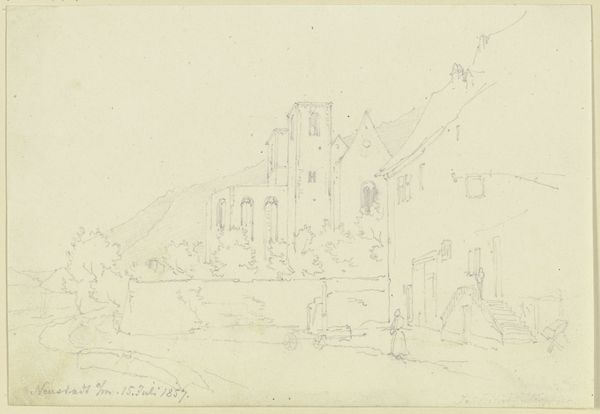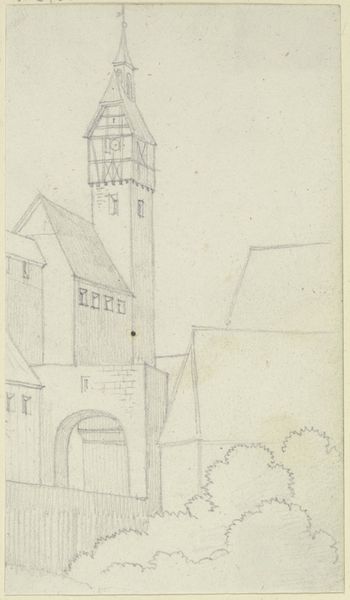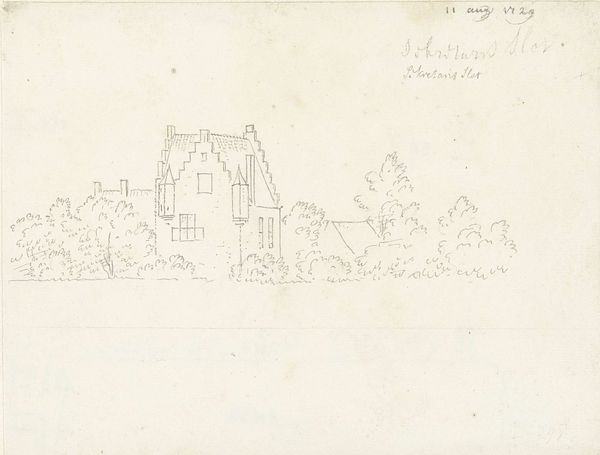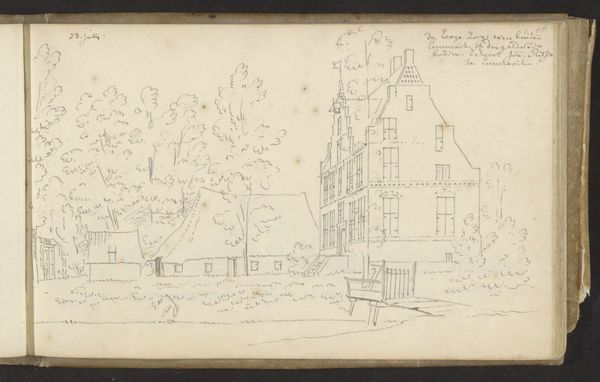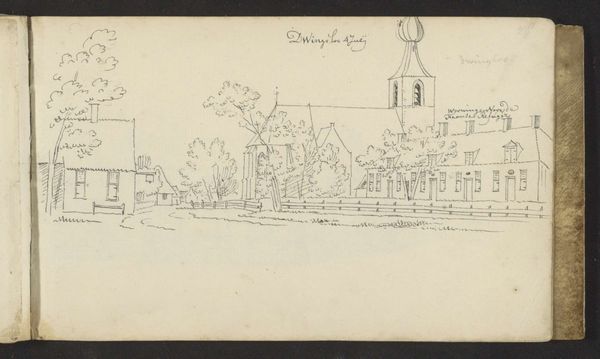
drawing, pencil
#
drawing
#
light pencil work
#
quirky sketch
#
landscape
#
personal sketchbook
#
idea generation sketch
#
sketchwork
#
ink drawing experimentation
#
pencil
#
sketchbook drawing
#
cityscape
#
storyboard and sketchbook work
#
sketchbook art
#
initial sketch
Dimensions: height 148 mm, width 179 mm
Copyright: Rijks Museum: Open Domain
This is Adrianus Eversen’s sketch of houses by the water. The gabled roofs, repeated across the structures, are not merely architectural features but resonate deeply with a collective human yearning for shelter. The gable, as an archetypal form, appears across cultures—from ancient Roman temples to medieval European homes. It evokes a sense of stability and protection. The way the roofs are drawn invites one's gaze upwards, connecting us to something more profound. Think of the triangular pediments in classical architecture, echoing the same upward, sheltering gesture. The pointed arches in Gothic cathedrals similarly aspire towards the divine. Each repetition of this form, whether in a humble house or a grand cathedral, taps into a shared, deeply ingrained desire for safety. It’s a recurring motif in the theater of human existence, a constant stage where the longing for refuge plays out. The gable becomes a vessel through which cultural memory and subconscious desires express themselves. A reminder that while styles evolve, the search for a sanctuary remains.
Comments
No comments
Be the first to comment and join the conversation on the ultimate creative platform.
